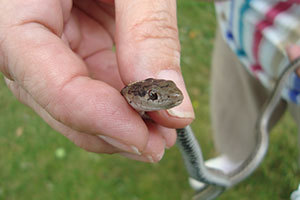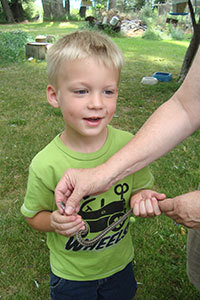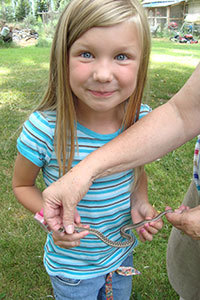by Marjorie Meyher
Home educating during the “Teen Years” is, well, as the saying goes, “a horse of a different color.” By now, your child should know how to read, write, and do math. Having come this far, you may stop and catch your breath. OK, that’s all. Time’s up. Time to move on, farther, faster, and better equipped than ever before. You’ve taught your child to be an autodidact, of course. “A what?” you ask. Well, a child who is an autodidact is the answer to a busy mom’s plea for more time and energy. The meaning of the word “autodidact” is “one who is self- educated or self-taught.” Kind of similar to the saying that if you give a man a fish, you feed him for a day, but if you teach him to fish, you have fed him for a lifetime.
OK, so let’s say that you’ve reached the point that your precious (but growing) little darling can take some responsibility for his or her own education and learning processes. Now what? Well, the answer to that question varies as “the night, the day,” as Shakespeare said, and depends on many factors, such as the age of your child, his or her personal interests and abilities, the facilities and resources– including money–that you have available, your teen’s and your prioritization of the most important ideas, facts, and subjects to study in a limited amount of time, her inner motivation and desire to learn, his eventual goals, the number of hours in a day . . . wait, no, that last one was from the “can’t do anything about it” list.
Well, mom (or dad), take off that apron (face it, the strings are just about cut anyway), and roll up your sleeves, because it is time to really dig in, time’s a- wastin’. “The desire to learn,” writes Cyril O. Houle, “like every other human characteristic, is not shared equally by everyone. But in a world which sometimes seems to stress the pleasures of ignorance, some [do] seek the rewards of knowledge . . . The desire to learn seems, in fact, to pervade their existence. They approach life with an air of openness and an inquiring mind.” [The Inquiring Mind. University of Wisconsin Press, 1961].
Sounds like a description of the Ideal Homeschooling Teen (IHT) to me!
Let come what may, college or vocation, your homeschooled teen needs to be prepared to meet life head-on, with no regrets, no hesitation, and no looking back. “Look out world, here we come,” (they say), and strengthened and prepared from their hours and days “in the nest,” there is no need for the common “ready or not” problem. Your homeschooled teen can be ready to take up the responsibilities and opportunities that await her as an adult, and your heart will swell with pride and gratitude that you were able to celebrate life and learning with her as she developed during the crucial years leading to adulthood.
Being an autodidactic learner is essential for effective learning in the teen years. “Exploration of the full range of his possibilities is not something that the self-renewing man leaves to the chances of life,” wrote John Gardner. “It is something he pursues systematically, or at least avidly, to the end of his days.” [Self-Renewal. Harper & Row, 1963].
Homeschooling can be a lot of work, and some days can be harder than others. Let’s not kid ourselves: homeschooling requires sacrifice. It requires our hearts, might, mind, and will. Some days it seems that it requires more than we have to give. It is then that a kind Father in Heaven shows us a bright spark in the eye of a child as they understand something new, or allows us to see in our mind’s eye what the public school alternative would do to the spirit of our teen. He gives us one more fresh surge of energy when we are already filled to the brim with duties and obligations. Yes, he tenderly cares for us as we care for his children, in return. Let us never forget that we are about our Father’s business as we homeschool eternal spirits on their journeys toward eternal life. This is not just about academics. For some of us, our children’s spiritual lives are at stake, whether we know it or not. And that is the truth.
Abridged from “Homeschooling the Teen Years,” by Marjorie A. Meyer, originally published by School of Abraham. Used with permission. For the complete text of this article, please see http://www.schoolofabraham.com/teenyears.htm
About the Author
Marjorie Meyer is the founder of School of Abraham website and a former Board member of the National LDS Homeschool Association. She graduated from Brigham Young University with a B.S. degree in Psychology. As the mother of eight children, Marji is currently enrolled in Life’s University, where she finds the coursework to be the most challenging she has encountered. The key to successful family education, she believes, is “having a brain, a heart, and courage!” and understanding that ‘There’s no place like home.’












